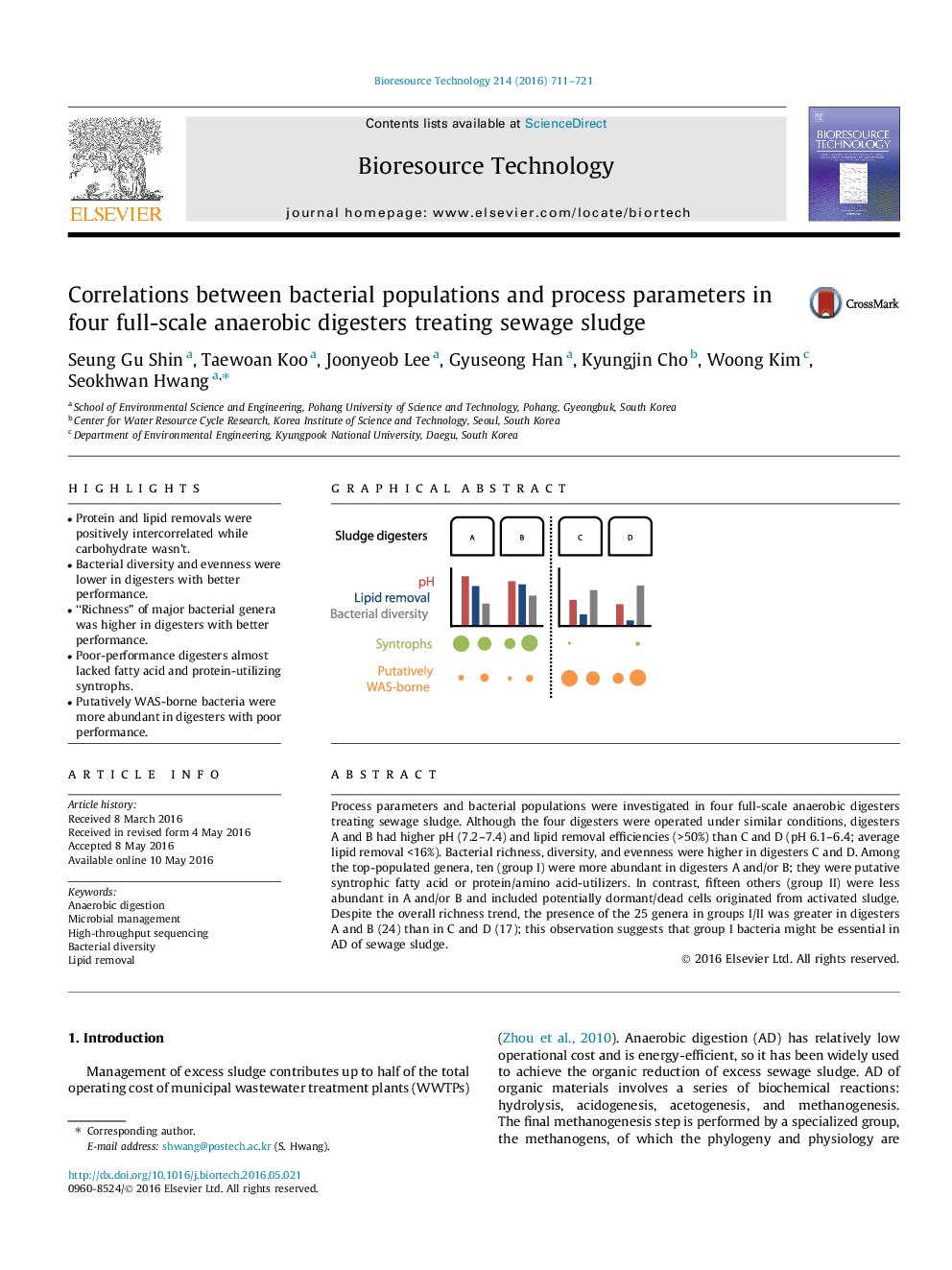| کد مقاله | کد نشریه | سال انتشار | مقاله انگلیسی | نسخه تمام متن |
|---|---|---|---|---|
| 679065 | 1459929 | 2016 | 11 صفحه PDF | دانلود رایگان |
• Protein and lipid removals were positively intercorrelated while carbohydrate wasn’t.
• Bacterial diversity and evenness were lower in digesters with better performance.
• “Richness” of major bacterial genera was higher in digesters with better performance.
• Poor-performance digesters almost lacked fatty acid and protein-utilizing syntrophs.
• Putatively WAS-borne bacteria were more abundant in digesters with poor performance.
Process parameters and bacterial populations were investigated in four full-scale anaerobic digesters treating sewage sludge. Although the four digesters were operated under similar conditions, digesters A and B had higher pH (7.2–7.4) and lipid removal efficiencies (>50%) than C and D (pH 6.1–6.4; average lipid removal <16%). Bacterial richness, diversity, and evenness were higher in digesters C and D. Among the top-populated genera, ten (group I) were more abundant in digesters A and/or B; they were putative syntrophic fatty acid or protein/amino acid-utilizers. In contrast, fifteen others (group II) were less abundant in A and/or B and included potentially dormant/dead cells originated from activated sludge. Despite the overall richness trend, the presence of the 25 genera in groups I/II was greater in digesters A and B (24) than in C and D (17); this observation suggests that group I bacteria might be essential in AD of sewage sludge.
Figure optionsDownload as PowerPoint slide
Journal: Bioresource Technology - Volume 214, August 2016, Pages 711–721
